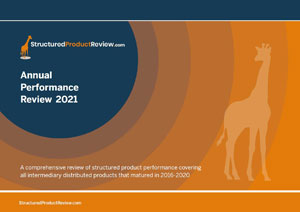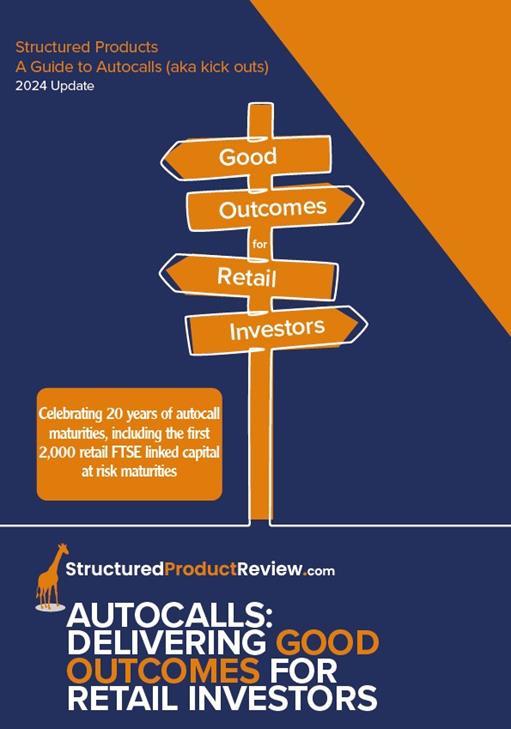04/10/2023
The following article was written by Paul Stadden, UK Sales Manager at iDAD.
In the world of Independent Financial Advisers (IFAs), dilemmas abound. Clients armed with the knowledge of easily being able to source 5% to 6% gross annual returns on cash are beginning to deeply question the value added by their advisers. After all, why pay for advice when cash is seemingly king? Yet, IFAs are stuck in a rut, heavily reliant on Model Portfolios that have recently struggled to deliver the consistent 7%+ type returns many clients’ desire. The bond markets have finally emerged from a formidable 30-year bull run, and equities continue their frustrating sideways dance.
Enter the much-maligned hero of this tale: the 'Structured Product.' Some have unfairly judged it in the past, but it often provides compelling solutions for both clients and their IFAs. These intriguing financial instruments offer a logical path for investors seeking achievable returns, particularly in uncertain times. They present a clear view of 'defined returns,' often attainable even in flat or falling markets. And, perhaps most importantly, they come with transparent, well-accepted risks, as attested by those who have used them effectively for years.
So, why don't structured products enjoy a reputation for lower risk, given their ability to protect capital against substantial market falls and still deliver positive returns in turbulent times? The proverbial elephant in the room is 'Credit Risk,' an issue that looms large across the entire financial spectrum. Ironically, it is also a legitimate means of climbing the risk-adjusted returns ladder. In the new era of higher interest rates, Structured Deposits have made a comeback, shielding capital from market risk, backed by £85,000 FSCS cover against Credit Risk, and offering defined returns even in challenging markets. They are a lifeline for clients, preventing panicked selling, instilling predictability, consistency, and the promise of returns.
Risk is an unavoidable companion in the world of investments. The key is to calibrate one's acceptable level of risk relative to the potential rewards available at a given moment.
Structured Products are trading a historically rarer form of risk—the collapse of a global bank—for a more prevalent risk: the likelihood of markets tumbling. Some IFAs have long clung to unwarranted excuses for not introducing clients to these sound investments that complement portfolios alongside passive and active fund management.
"I don't understand them and don't want to consider them." - They don't necessarily need to be dissected under the hood. If the bank is credit-worthy, they operate within legally binding terms outlined in the brochure, a fact well-appreciated by clients who have embraced these plans for over two decades.
"Access is restricted." - Not true, they are highly liquid, and they offer daily liquidity and pricing when required.*
"They aren't on my preferred platform." - This issue lies more with the platform industry. There is no reason why structured products shouldn't be accepted. These assets can be held without explicit AMCs and should find a place in most SIPPs and open-architecture platforms.
Other excuses may surface, but when clients discover these investments, they often lament not having encountered them earlier.
With the FTSE 100 at 7,600 today, having languished at 6,930 in December 1999, equity performance has relied solely on dividend growth. Crystal balls remain elusive, but there's much to gain from exploring the merits of the structured product market, especially in an environment where confidence in equities, bonds, and model portfolios wanes. It's a story of adaptability and opportunity in an ever-shifting financial landscape.
Paul Stadden
UK Sales Manager iDAD
enquiries@idad.com
Structured investments put capital at risk
*It is unlikely that an investor would receive the original value in full
Also in this section
- How old is too old? Are structured products to die for?
- Product focus - October 2024
- Q3 2024 Issuance
- Q3 2024 maturity results
- A share of spread bets on steroids?
- Product focus - September 2024
- Maturities of the month - August 2024
- Right on time
- Product focus - August 2024
- Keep calm and zoom out
- 2,000 and counting
- Q2 2024 maturity results
- 20 years of autocall maturities
- Product focus - June 2024
- Fixed income or interest?
- Maturities of the month - May 2024
- The barrier debate - revisited
- Product focus - April 2024
- Maturities of the month - April 2024
- Time to call
- I don't believe markets are ever too high for Structured products!
- Notes on counterparty exposure
- Return of Nikkei
- Q1 2024 issuance
- Q1 2024 maturity results
- Structured Products – AAAAAGH!
- Hop in CIBC
- Re-enter Santander
- How to build a financial fortune - revisited
- Issuance in 2023
- Where's the risk?
- Questionable offerings
- Challenging the case against structured products - 'Loss of dividends'
- Navigating the investment landscape
- Challenging the case against structured products - Counterparty risk
- 6-year autocalls approaching final destination
- 1,750 FTSE capital at risk autocall maturities
- The leopard that changed her spots
- Q3 2023
- Challenging the case against structured products - Keydata
- Dilemmas for UK IFA's and the unique role of Structured Products
- 'High charges'
- Precipice bonds
- Intro
- FTSE 100 Contingent Income
- Indexing the indices
- Something different
- Investing through volatility
- 100 10:10s
- The best or worst?
- The 10%/25% 'Rule' that never was
- Structured products and the yield curve
- Fixed income: Capital at risk?
- Prospects for UK inflation - and fun with A.I!
- The Barrier Debate
- More Deposits for now
- Last of the Americans
- What if?
- Time heals all wounds, we hope...
- How to diversify portfolios using structured products?
- The Proof Is In The Pudding...
- Debunking Structured Misconceptions
- 1,500 FTSE Capital-at-Risk Autocall Maturities
- Q3 2022 Maturity Results
- What do we prefer?
- Deposits vs Capital ‘Protected’
- There’s time yet…
- Where did you invest your clients?
- A Six-Month Reflection
- Return of the Rev Con
- Happy 2nd Birthday FTSE CSDI
- Q2 2022 Maturity Results
- The best and worst yet still the best
- Critique my Suitability - Mariana 10:10 Plan June 2022 (Option 2)
- 10/10 for 55 10:10’s
- Q1 2022 Maturity Results
- 'How to build a financial fortune': a follow up
- Critique my Suitability - Mariana 10:10 Plan April 2022 (Option 2)
- 2021 Capital-at-Risk Autocall Maturity Review
- An unwelcome return...
- CSDI's First Birthday
- Bon Anniversaire
- Introducing the FTSE Custom 100 Synthetic 3.5% Fixed Dividend Index
- Q3 2021 Maturity Results
- Critique my Suitability - Mariana 10:10 Plan October 2021 (Option 2)
- Blurring the lines...
- Beware of false knowledge; it is more dangerous than ignorance
- Good news, bad news...
- Certainty is Certainly a Benefit
- Critique my Suitability - Mariana 10:10 Plan September 2021 (Option 2)
- A Twenty-Year Progression
- Q2 2021 Maturity Results
- Nine 8:8s Post Positive Returns in Falling Markets
- Critique my Suitability
- Q1 2021 Maturity Results
- Morgan Stanley’s Marvelous Maturity Medley
Current Products
We review the UK's retail structured investment sector, providing pertinent support for Professional Advisers and relevant research tools.
View all ⟶


